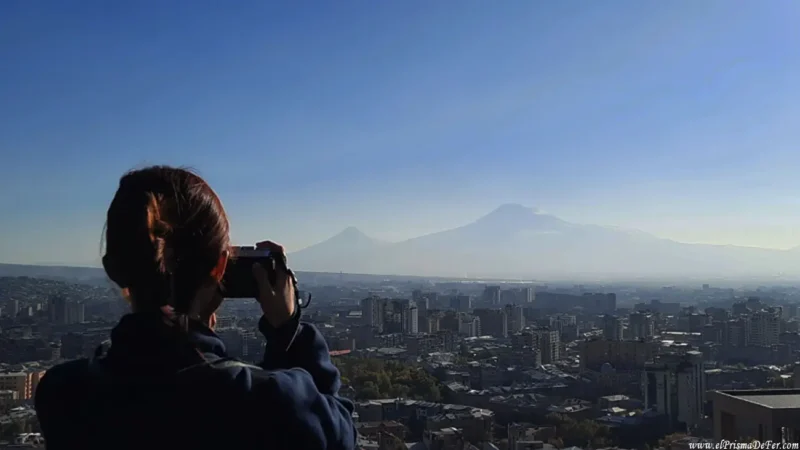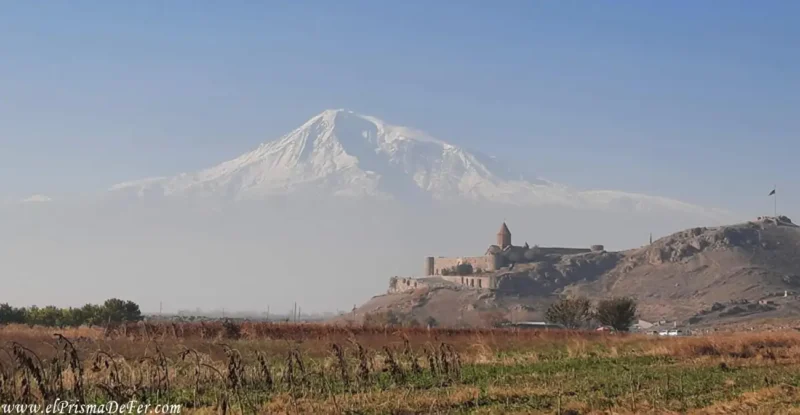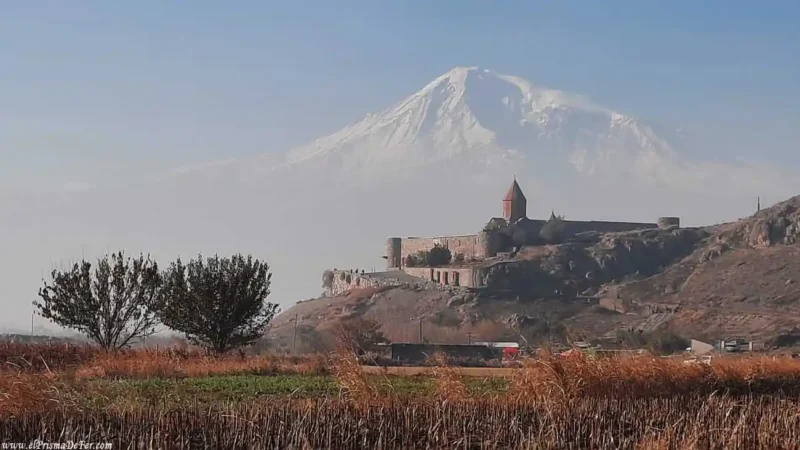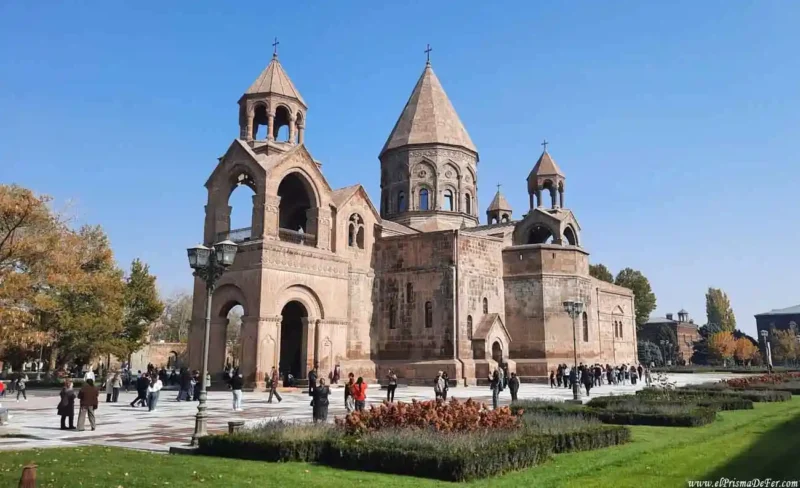Visiting the Geghard Monastery, Garni Temple, and the Symphony Stones in a single day from Yerevan is one of the most comprehensive and highly recommended excursions in Armenia. These three very different sites provide a better understanding of the blend of history, spirituality, and landscapes that characterize the country: from a medieval monastery carved into the rock, to the only surviving Greco-Roman temple in the region, to a geological formation that seems plucked from a fantasy setting.
The best thing is that they are all relatively close to the capital, so they can be easily combined into one day.
In this post, you'll find my experience visiting these three places in one day from Yerevan, with practical information on how to organize your visit, what to expect at each site, and some helpful tips to make the most of your trip.
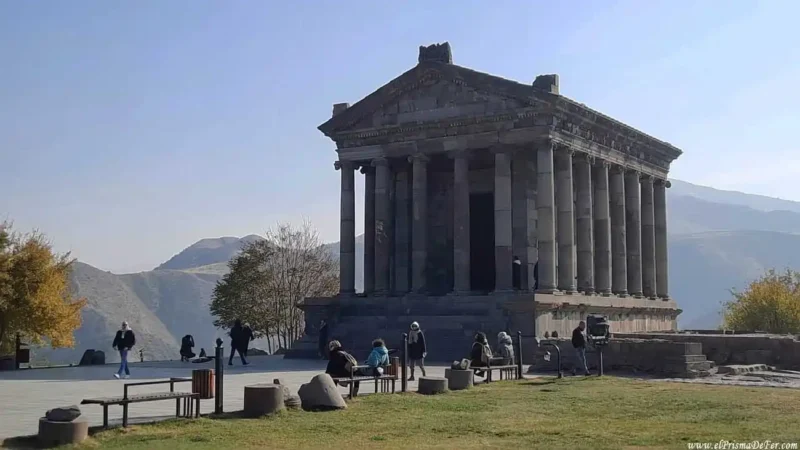

Table of Contents
Where are they located?
The Geghard Monastery, the Garni Temple and the Symphonic Stones are located in the Kotayk region, east of Yerevan, within easy reach of a day trip.
The Garni Temple is located about 30 kilometers from the capital and is usually the first stop on tours.
Very close by, just a 2.5 kilometer walk away, are the rock formations known as the Symphonic Stones, in the Azat River Gorge.
Finally, the Geghard Monastery is about 9 kilometers further on, nestled in a valley surrounded by mountains.
How to visit Geghard, Garni and the Symphony Stones
Although this article describes my experience using public transportation, there are several ways to visit Geghard Monastery, Garni Temple, and the Symphony Stones, depending on each traveler's preferences.
On an organized tour
A very convenient option is an organized tour from Yerevan, which usually includes transportation, a guide, and in some cases, tickets to the sites, ideal if you want to make the most of the day without worrying about logistics.
By private car
Another alternative is to rent a car, which gives you much more freedom to decide the schedule, the order of visits, and the time you want to spend at each place.
Thus, each visitor can choose between the independence of public transport, the convenience of a guided tour, or the flexibility of their own car.
In what order to visit Geghard, Garni and the Symphony Stones
In my case, I decided to start the tour at the Geghard Monastery, the furthest of the three points to visit, and it was a great choice.
Going early allowed me to avoid most of the tour groups that usually arrive later, so I was able to explore the complex much more leisurely and enjoy the spiritual atmosphere of the place without crowds around.
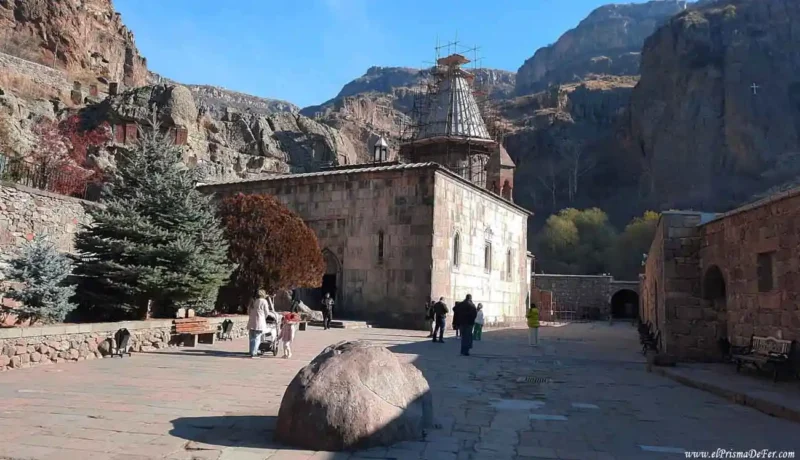
Afterwards I continued towards the Garni Temple, which is on the way, and from there I went down to the Azat River Gorge to see the Symphonic Stones.
That said, it's also possible to do it in reverse order, which is how tours departing from Yerevan usually organize their itinerary. They first stop in Garni, then head to the rock formations, and leave Geghard for last.
The choice is up to you, but starting early in Geghard can be an advantage if you're looking for a quieter atmosphere.

Map with references to getaways from Yerevan
How to visit the Geghard Monastery
If you want to go by public transport from Yerevan, the cheapest option is to take the bus 266/284 that leaves from the Gai Bus Station (see on map), near the Megamall.
There is no bus line that goes all the way to the monastery gate, as the bus ends a few kilometers before, in the village of Goght (see on map), which is the closest you can get by public transport. The journey time from the station to Goght is approximately 1 hour and 05 minutes.
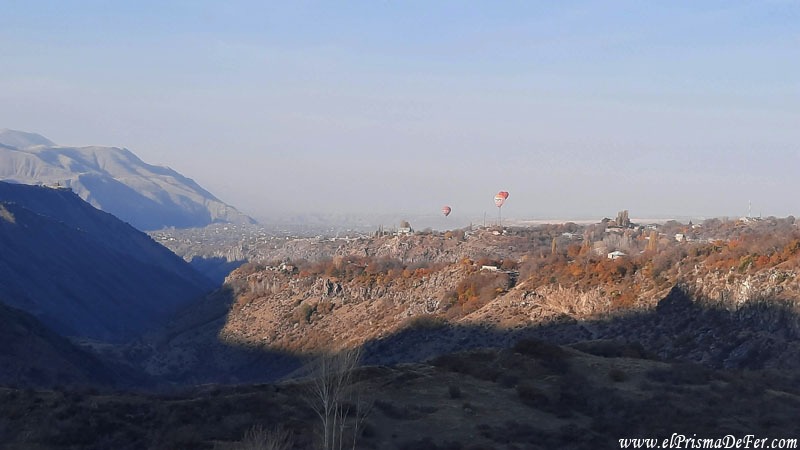
From there you have to walk about 3 kilometers to the Geghard Monastery, but the journey is really pleasant, since the road you have to continue along has spectacular views of the Azat River Gorge and the surrounding mountains.
It is worth clarifying that this same bus also passes through the Garni area and the Symphonic Stones, so it can be used to reach any of the three main points of the excursion.
It is important to keep in mind that the bus frequency is not very high, so it is advisable to leave Yerevan early and check the return times to avoid any setbacks.
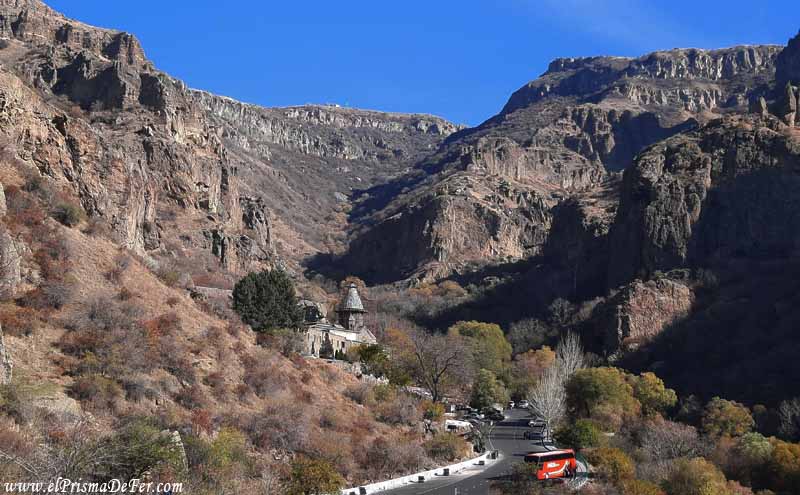
History of the Geghard Monastery
The Geghard Monastery is one of Armenia's most iconic sites and a clear reflection of the country's deep Christian tradition. Founded in the 4th century by Saint Gregory the Illuminator on the site of a traditionally sacred cave, the complex grew over time to become an important religious and cultural center.
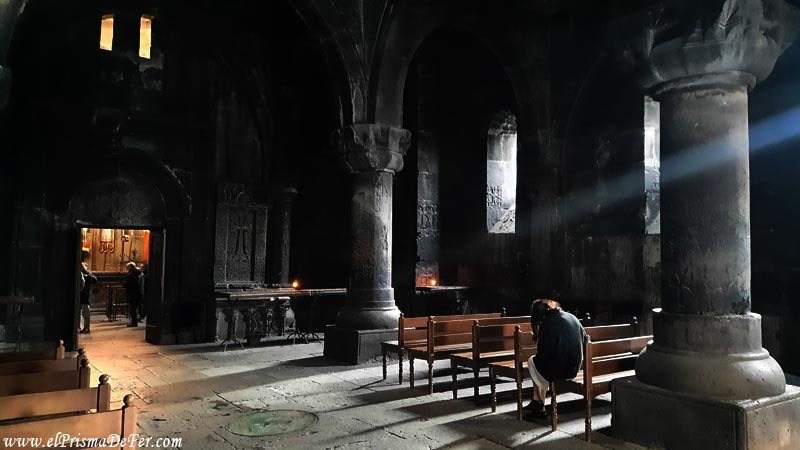
Its name, Geghard, means “spear” in Armenian and refers to the relic of the spear with which a Roman soldier is said to have wounded Christ during the crucifixion, which was kept here for centuries.
Much of the current monastery dates back to the 12th and 13th centuries, when it was rebuilt and expanded by the Zakarida dynasty. What makes it unique is that many of its spaces are carved directly into the rock, creating a mystical atmosphere where architecture blends with nature.
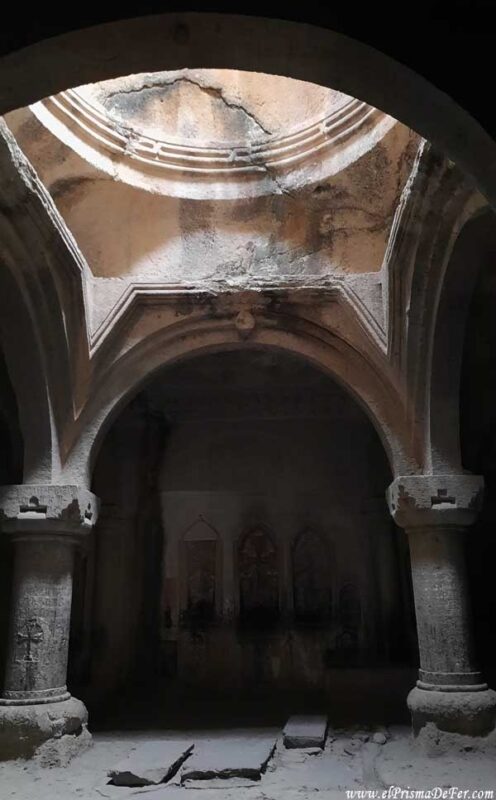
In addition to its historical and religious significance, Geghard has also been a UNESCO World Heritage Site since 2000, thanks to its spiritual significance and the beauty of its location in the middle of a mountain valley.
What to see at Geghard Monastery
Upon entering, the first thing you will find is the main church of Katoghike, built in the 13th century, with its characteristic dome and carved stone walls.
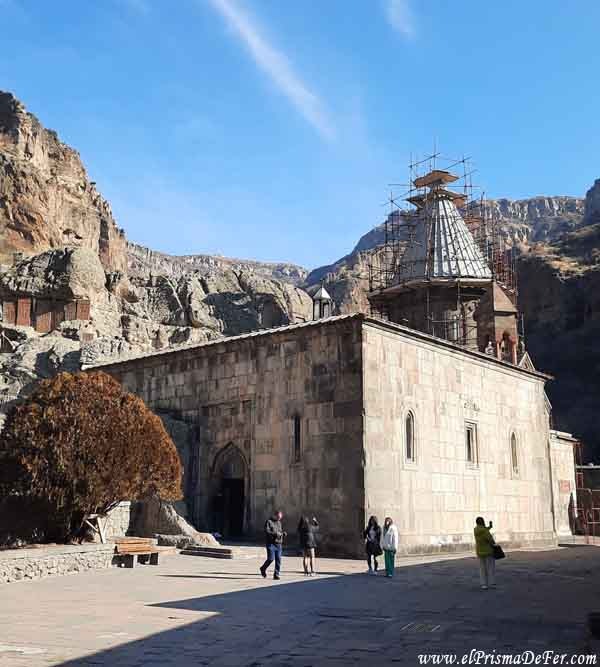
One of the most outstanding features are the chapels carved into the rock, where light enters dimly through openings in the ceiling and creates a unique atmosphere. There you can also see intricately carved stone crosses (khachkars), a very distinctive symbol of Armenian tradition.
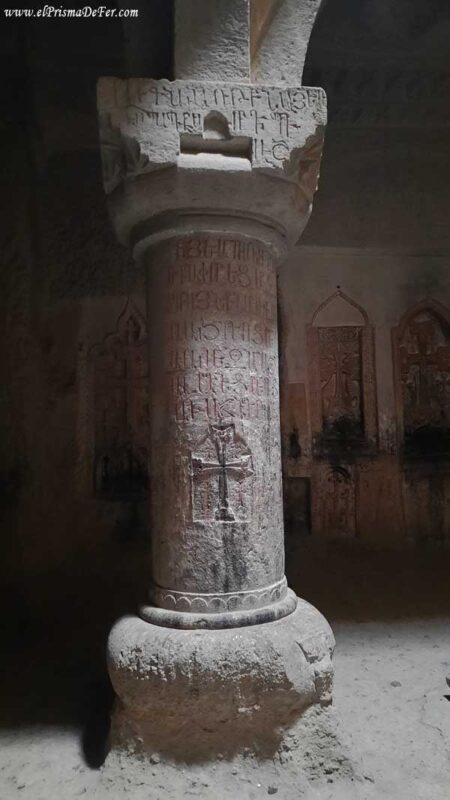
It is also worth exploring the complex's patios and passageways, where you can appreciate how the architecture blends with the surrounding nature.
From certain points, there are also spectacular views of the Azat River Valley, making the visit both a spiritual and scenic experience.
Prices and opening hours of the Geghard Monastery
Entrance to the Geghard Monastery is free, as it is an active religious site and cultural heritage site open to the public. However, small voluntary donations may occasionally be made in some areas of the complex, intended for the upkeep of the site.
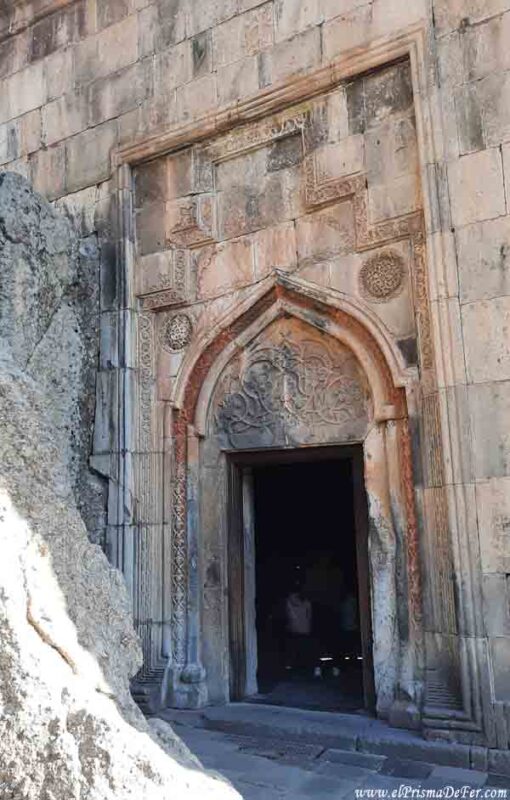
As for hours, the monastery is generally open every day from morning until late afternoon, from approximately 9:00 a.m. to 6:00 p.m.. Since there is no formal access control, the hours are not always strict, but it's recommended to go within that time frame to ensure you can explore the area at your leisure.
Keep in mind that if you go in winter, natural light is more limited, so it's a good idea to plan your visit earlier.

How to visit the Garni Temple
The way to get to the Garni Temple depends on where you are on your tour. If you are leaving directly from Yerevan, the most practical option is to take the same minibus that I mentioned in the Geghard Monastery section, but in this case you have to get off much earlier, in the village of Garni, where the temple is located. The stop is quite close to the entrance (view on map), so it's easy to get there on foot from there.
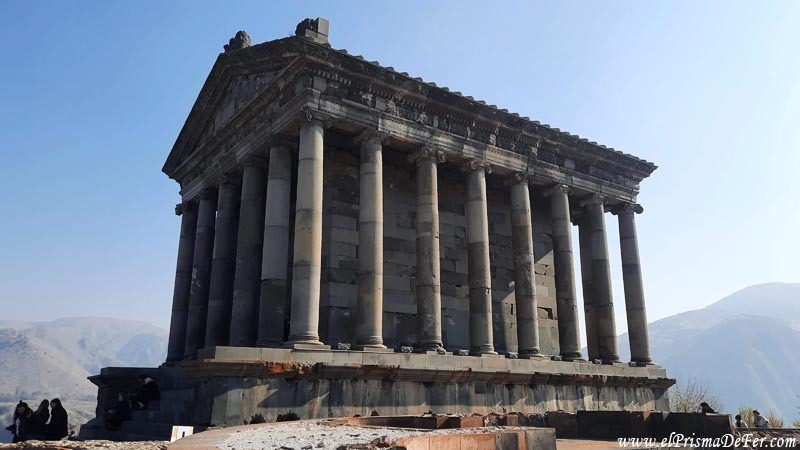
However, if you're coming from the Geghard Monastery, the situation is different. Since the bus ends in the village of Goght, you have no choice but to walk those kilometers back to be able to take the same bus again. Then, you just have to get off at Garni, where the stop is just a few steps from the temple.
History of the Temple of Garni
The Garni Temple is one of the most unique monuments in Armenia and the entire Caucasus region. Built in the 1st century AD under King Tiridates I, it is dedicated to the sun god Mithra, making it a rare example of Greco-Roman architecture in a country that would later become the world's first officially Christian state.
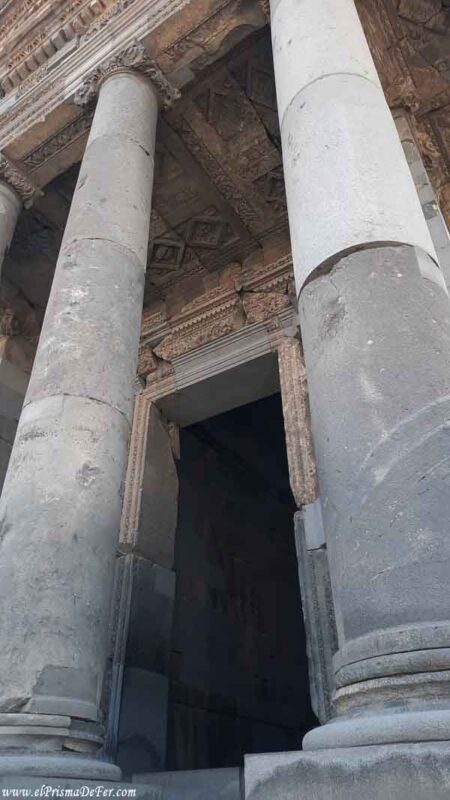
After the Christianization of Armenia in 301, most of the pagan temples were destroyed, but Garni was preserved because it became part of the summer residence of the Arsacid kings.
The temple stood for centuries until it was destroyed by a powerful earthquake in 1679, leaving it in ruins. It was only in the 1970s that it was almost completely rebuilt with the original stones, restoring its current appearance.
What to see at the Temple of Garni
The first thing that catches your eye are its perfectly restored Corinthian columns, which surround the temple and show the influence of the Greco-Roman world in Armenia.
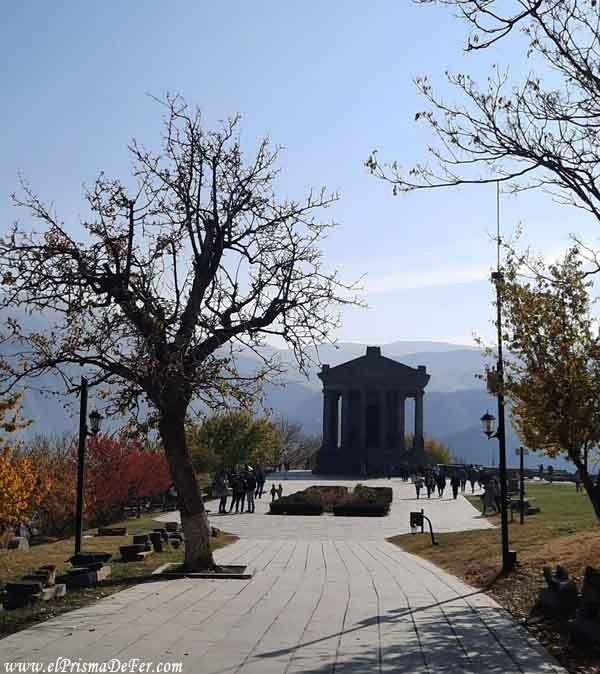
Upon entering, you can appreciate the typical layout of temples of the period, with an altar in the center and very well-preserved architectural details.
In addition to the temple itself, it is worth exploring the surrounding area, where you can find remains of walls and annexed buildings that were part of the royal complex.
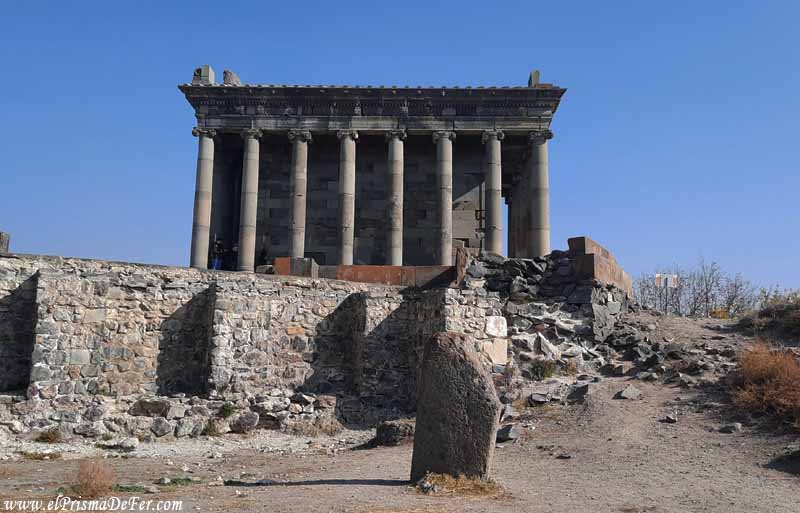
From several points on the site you have panoramic views of the Azat River and the nearby cliffs, creating a spectacular natural setting.
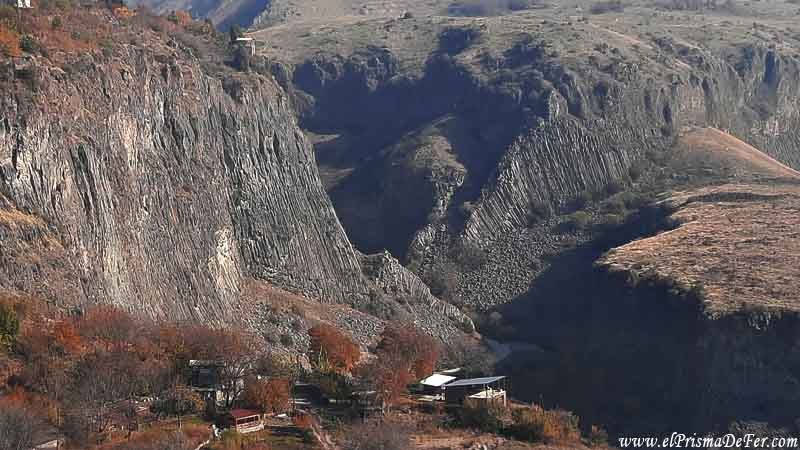
Another nearby attraction is the Baths of King Tiridates and the surrounding rock formations, which allow you to combine a historical visit with a pleasant walk through the landscape.
Prices and opening hours of the Garni Temple
The entrance to the Garni Temple has a symbolic fee, which is usually around 1500 Armenian drams (about 2-4 USD), which is used for the maintenance of the site and the preservation of the structures.
Additionally, some additional tours or activities in the surrounding area may have an additional cost, such as a visit to the Baths of King Tiridates or guided trails.
As for opening hours, the temple is usually open every day from 9:00 a.m. to 6:00 p.m., although in summer it is open a little longer to take advantage of daylight.
It is recommended to arrive early, especially during peak season, as this is one of the busiest destinations near Yerevan and crowds can make the visit difficult.

How to visit the Symphony Stones
Visiting the Symphonic Stones from the Garni Temple is very easy, as they are located just 2.5 km from the temple. This makes it ideal to walk, taking advantage of the journey to enjoy the scenery and learn a little more about the area, with its cliffs and unique rock formations.
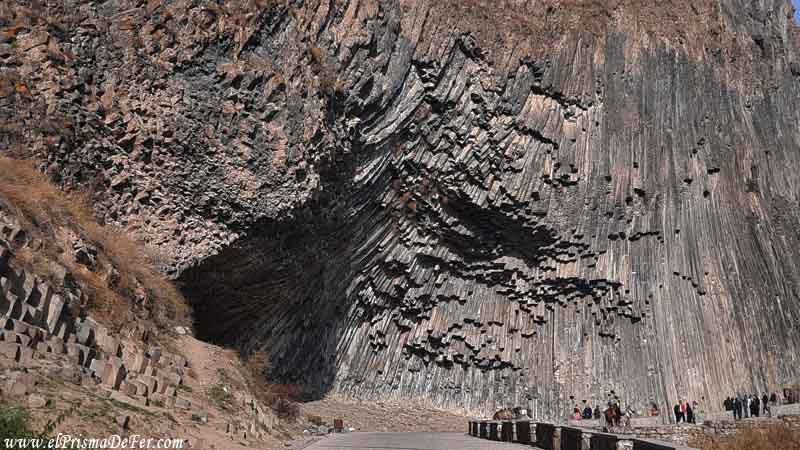
The site has two entrances, although most visitors enter through the east entrance (see on map), where there is a small car parking lot.
From there, you can easily explore the area and get close to the famous basalt columns that make up the Symphonic Stones, as well as admire the view of the Azat River that runs along the entire route.
The tour of the Symphonic Stones is quite short, since the walking section is short and it can be visited in a short time. At the end of the walk, one can exit through the west access (see on map), which connects again with the path to the Garni Temple, or retrace your steps to the east access, where the parking lot is located and where most visitors begin their tour.
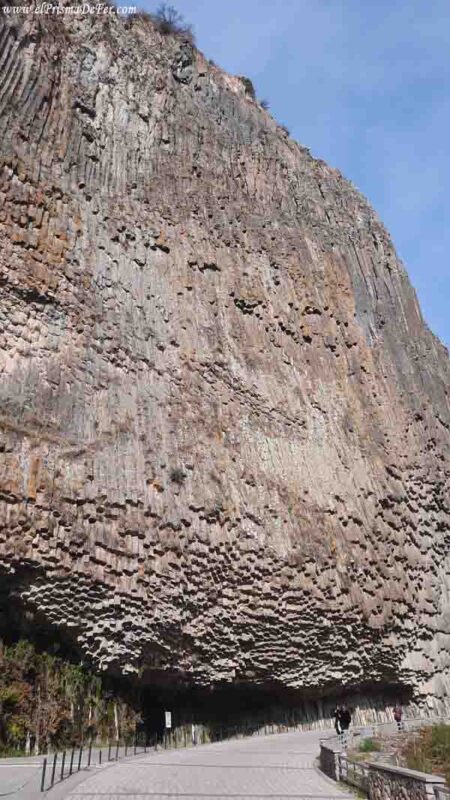
What are Symphonic Stones?
The Symphonic Stones are a unique geological formation composed of basalt columns that rise in a hexagonal shape, creating a kind of “natural organ” carved by nature.
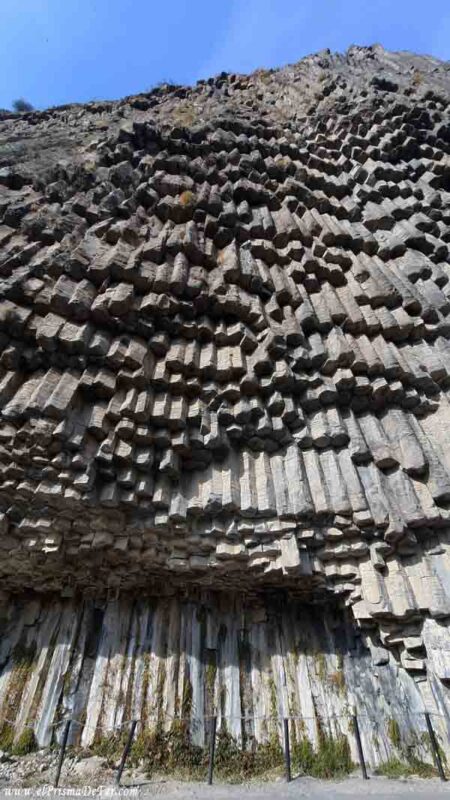
The name "symphonic" is due to the fact that when the wind blows or some of the columns are gently struck, they produce musical sounds reminiscent of a percussion instrument, as if the rock itself could play melodies.
This combination of form and acoustics has made the place famous not only for its visual beauty, but also for the curious sensory experience it offers.
Furthermore, the Symphonic Stones are located in a beautiful natural setting, on the banks of the Azat River and surrounded by cliffs, making the visit enjoyable both for the visual appeal and the uniqueness of the stones.
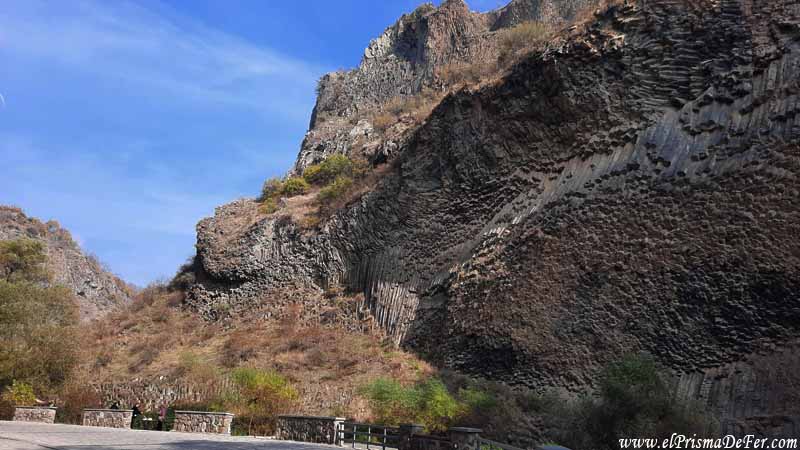
Prices and schedules of the Symphonic Stones
Access to the Symphonic Stones costs 200 Armenian drams, so any visitor can visit and explore the area.
As for the opening hours, as it is an open-air space, it can be visited all day long, although it is recommended to do so between 9:00 a.m. and 6:00 p.m., taking advantage of natural light and avoiding late afternoon, especially if you plan to walk back to the Garni Temple or Yerevan.

How to get back to Yerevan from Garni or the Symphony Stones
To return to Yerevan, the easiest way is to take the same bus we used to get there, from the stop I marked on the map. This will take you back to the Gai bus station in Yerevan, which is one of the main arrival points for minibuses from the surrounding areas.
From there, you can easily take any other bus or marshrutka to the city center or your accommodation. It's a good idea to check the return minibus schedules to avoid waiting too long, especially if you're visiting in the afternoon.
Other day trips you might like from Yerevan
My thoughts
Visiting the Geghard Monastery, the Garni Temple, and the Symphony Stones in one day was a truly unique experience. I loved combining three completely different types of places: a rock-hewn monastery with a unique spiritual atmosphere, a Greco-Roman temple with thousands of years of history, and geological formations that seem out of this world.
Although it involves several bus transfers and some walking, it is entirely possible to visit all three sites in one day and very affordably, making it an ideal getaway from Yerevan.
In my personal ranking of excursions from the capital, I would put it in second position, just after Khor Virap, but ahead of Echmiadzin Cathedral.
Support The Prism of Fer!
Your support helps me continue creating free content on the blog. Thank you so much!



